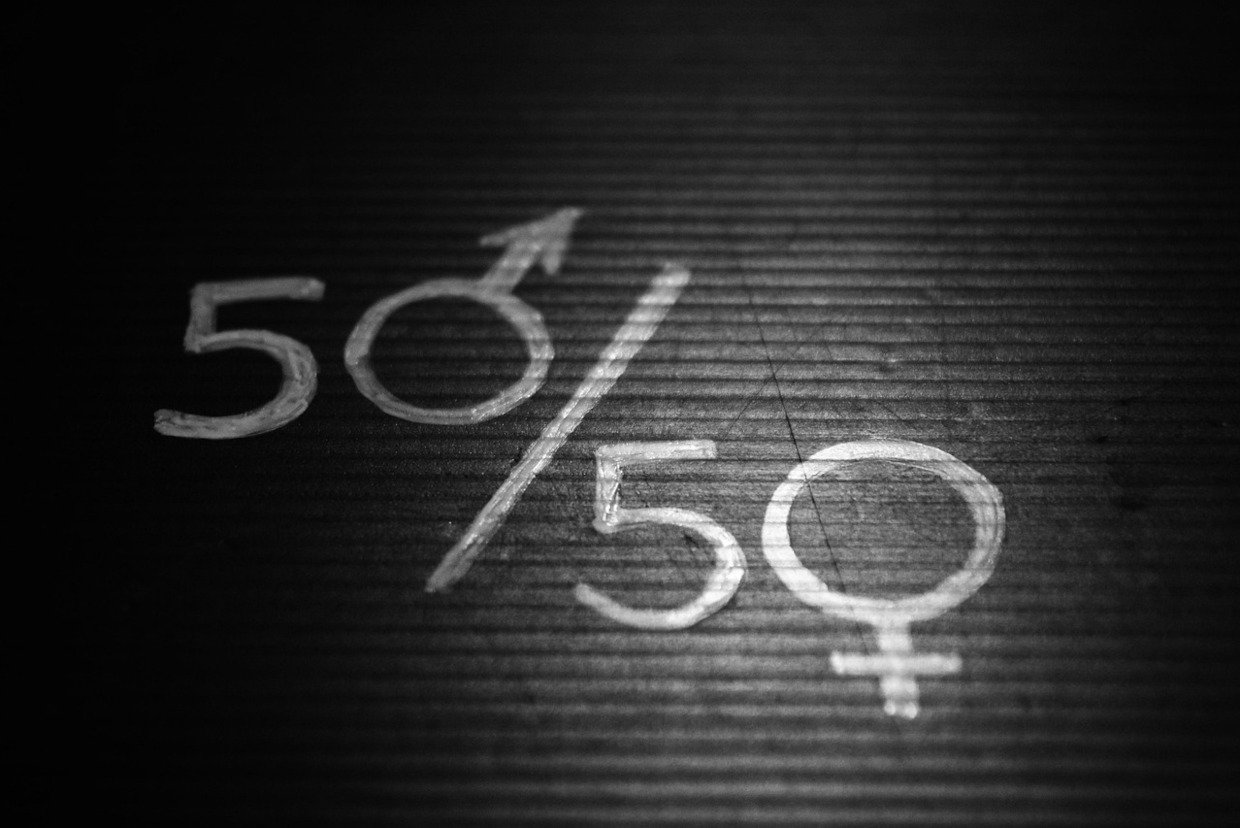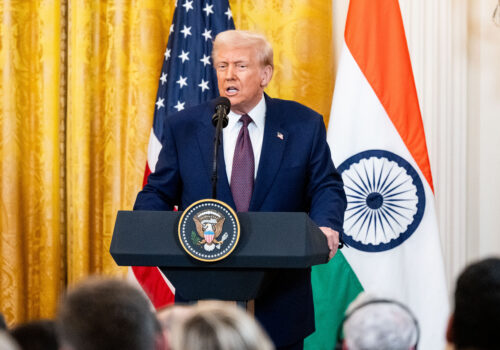European Economic and Social Committee reaffirms commitment to gender equality – Global Government Forum

Joint Declaration to Advance Sustainable Development Goal 5: Gender Equality
Signatories and Core Commitment
A joint declaration was signed on July 23 by UN Women and the European Economic and Social Committee (EESC) to reaffirm their commitment to advancing Sustainable Development Goal 5 (Gender Equality) and the empowerment of women and girls globally. The declaration was formalized by UN Women Executive Director Sima Sami Bahous and EESC President Oliver Röpke.
Strategic Objectives for SDG 5 Implementation
The partnership commits to deepening collaboration on several strategic objectives critical to achieving the targets of the 2030 Agenda for Sustainable Development. These objectives include:
- Mainstreaming a gender perspective across all governance and policymaking processes.
- Promoting women’s full and effective participation and equal opportunities for leadership at all levels of decision-making, in line with SDG Target 5.5.
- Combating all forms of gender-based violence and discriminatory social norms, addressing SDG Target 5.2.
- Addressing the unpaid care burden and structural barriers in labour and financial markets, contributing to SDG Target 5.4.
- Supporting access to education, digital tools, and economic empowerment for women and girls, particularly those facing intersecting forms of discrimination, which supports SDG Target 5.b.
Global Commitment within the Framework of the 2030 Agenda
High-Level Political Forum 2025 and Ministerial Reaffirmation
The signing occurred on the final day of the High-Level Political Forum (HLPF) 2025, the central United Nations platform for reviewing progress on the Sustainable Development Goals (SDGs). Concurrently, a new ministerial declaration was adopted by world leaders, reaffirming their commitment to placing gender equality at the center of global development efforts and the 2030 Agenda.
Pledges to Accelerate Progress on Multiple SDGs
The ministerial declaration outlines specific government pledges that support the achievement of gender equality and contribute to a range of interconnected SDGs:
- SDG 5 (Gender Equality): A pledge to eliminate all forms of gender-based violence, including child marriage and female genital mutilation.
- SDG 3 (Good Health and Well-being) & SDG 4 (Quality Education): A commitment to ensure universal access to inclusive education and to sexual and reproductive health and rights.
- SDG 8 (Decent Work and Economic Growth): A call for investment in care systems, gender-responsive social protection, equal pay, and women’s access to decent work, entrepreneurship, and digital inclusion.
- SDG 16 (Peace, Justice and Strong Institutions): A drive to enable women’s full, equal, and meaningful participation in public life, leadership, peacebuilding, and crisis response.
Urgency and Historical Context
With only five years remaining to implement the 2030 Agenda, the UN stated that the ministerial declaration sends a critical signal that achieving the SDGs is not possible without significant investment in the rights and empowerment of all women and girls. This renewed focus occurs as the international community prepares to mark the 30th anniversary of the Beijing Declaration and Platform for Action (Beijing+30), underscoring the need to translate long-standing commitments into concrete actions backed by resources and accountability.
Which SDGs are addressed or connected to the issues highlighted in the article?
-
SDG 5: Gender Equality
This is the central theme of the article. The text explicitly states, “Gender equality is one of the 17 Sustainable Development Goals (SDGs)”. The entire declaration between UN Women and the EESC is focused on “promoting gender equality and the empowerment of women and girls,” which is the core mission of SDG 5.
-
SDG 4: Quality Education
The article mentions the commitment to “support access to education… for women and girls” and to “ensure universal access to inclusive education.” This directly connects to SDG 4’s goal of ensuring inclusive and equitable quality education for all.
-
SDG 8: Decent Work and Economic Growth
The declaration aims to address “structural barriers in labour and financial markets,” promote “equal pay, women’s access to decent work, and support for entrepreneurship.” These points are fundamental components of SDG 8, which seeks to promote sustained, inclusive, and sustainable economic growth and decent work for all.
-
SDG 16: Peace, Justice and Strong Institutions
The article highlights the goal of “mainstreaming gender across governance and policymaking” and enabling “women’s full, equal, and meaningful participation in public life, leadership, peacebuilding, and crisis response.” This aligns with SDG 16’s aim to build effective, accountable, and inclusive institutions at all levels.
-
SDG 17: Partnerships for the Goals
The article is fundamentally about a partnership. The signing of a “joint declaration” between “UN Women and the European Economic and Social Committee (EESC)” to achieve common goals is a direct example of SDG 17, which encourages and promotes effective partnerships to support the achievement of all SDGs.
What specific targets under those SDGs can be identified based on the article’s content?
-
SDG 5: Gender Equality
- Target 5.2: Eliminate all forms of violence against all women and girls. This is identified through the pledge to “eliminate all forms of gender-based violence” and “combatting gender-based violence.”
- Target 5.3: Eliminate all harmful practices, such as child, early and forced marriage and female genital mutilation. The article explicitly mentions the pledge to eliminate “child marriage and female genital mutilation.”
- Target 5.4: Recognize and value unpaid care and domestic work. This is addressed by the commitment to “address the unpaid care burden” and invest in “care systems.”
- Target 5.5: Ensure women’s full and effective participation and equal opportunities for leadership. This is clear from the goals of “promoting women’s leadership and management” and enabling “women’s full, equal, and meaningful participation in public life, leadership.”
- Target 5.6: Ensure universal access to sexual and reproductive health and reproductive rights. This is mentioned in the ministerial declaration’s pledge to “ensure universal access to… sexual and reproductive health and rights.”
-
SDG 4: Quality Education
- Target 4.5: Eliminate gender disparities in education and ensure equal access to all levels of education. This is supported by the commitment to “support access to education… for women and girls” and ensure “universal access to inclusive education.”
-
SDG 8: Decent Work and Economic Growth
- Target 8.5: Achieve full and productive employment and decent work for all women and men… and equal pay for work of equal value. This is reflected in the call for “equal pay” and “women’s access to decent work.”
- Target 8.8: Protect labour rights and promote safe and secure working environments for all workers. This is implied by the goal to address “structural barriers in labour… markets.”
-
SDG 16: Peace, Justice and Strong Institutions
- Target 16.7: Ensure responsive, inclusive, participatory and representative decision-making at all levels. This is directly linked to the aim of enabling “women’s full, equal, and meaningful participation in public life, leadership.”
-
SDG 17: Partnerships for the Goals
- Target 17.17: Encourage and promote effective public, public-private and civil society partnerships. The entire article, detailing the “joint declaration” between UN Women and the EESC, exemplifies this target in action.
Are there any indicators mentioned or implied in the article that can be used to measure progress towards the identified targets?
-
For SDG 5 (Gender Equality)
- Indicator 5.2.1/5.2.2: Proportion of women and girls subjected to physical, sexual or psychological violence. Implied by the commitment to “combatting gender-based violence.”
- Indicator 5.3.1: Proportion of women aged 20-24 years who were married or in a union before age 18. Implied by the pledge to eliminate “child marriage.”
- Indicator 5.5.1: Proportion of seats held by women in national parliaments and local governments. Implied by the goal of promoting “women’s leadership” and “participation in public life.”
- Indicator 5.5.2: Proportion of women in managerial positions. Implied by the goal of “promoting women’s leadership and management.”
-
For SDG 4 (Quality Education)
- Indicator 4.5.1 (Parity indices): Parity indices (female/male) for all education indicators. Implied by the commitment to “support access to education… for women and girls” and eliminate gender disparities.
-
For SDG 8 (Decent Work and Economic Growth)
- Indicator 8.5.1: Average hourly earnings of female and male employees, by occupation, age and persons with disabilities. Implied by the call for “equal pay.”
-
For SDG 17 (Partnerships for the Goals)
- Indicator 17.17.1: Amount of United States dollars committed to public-private and civil society partnerships. The “joint declaration” itself serves as a qualitative indicator of a new partnership being formed to achieve the SDGs.
Table of SDGs, Targets, and Indicators
| SDGs | Targets | Indicators (Mentioned or Implied) |
|---|---|---|
| SDG 5: Gender Equality |
|
|
| SDG 4: Quality Education |
|
|
| SDG 8: Decent Work and Economic Growth |
|
|
| SDG 16: Peace, Justice and Strong Institutions |
|
|
| SDG 17: Partnerships for the Goals |
|
|
Source: globalgovernmentforum.com

What is Your Reaction?
 Like
0
Like
0
 Dislike
0
Dislike
0
 Love
0
Love
0
 Funny
0
Funny
0
 Angry
0
Angry
0
 Sad
0
Sad
0
 Wow
0
Wow
0


-1920w.png?#)







































































